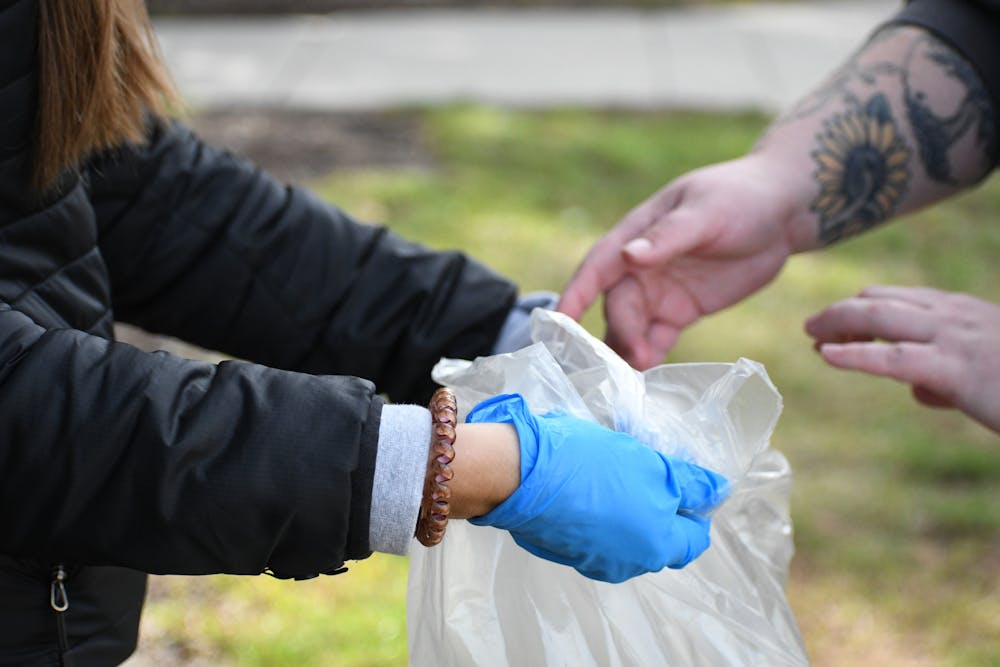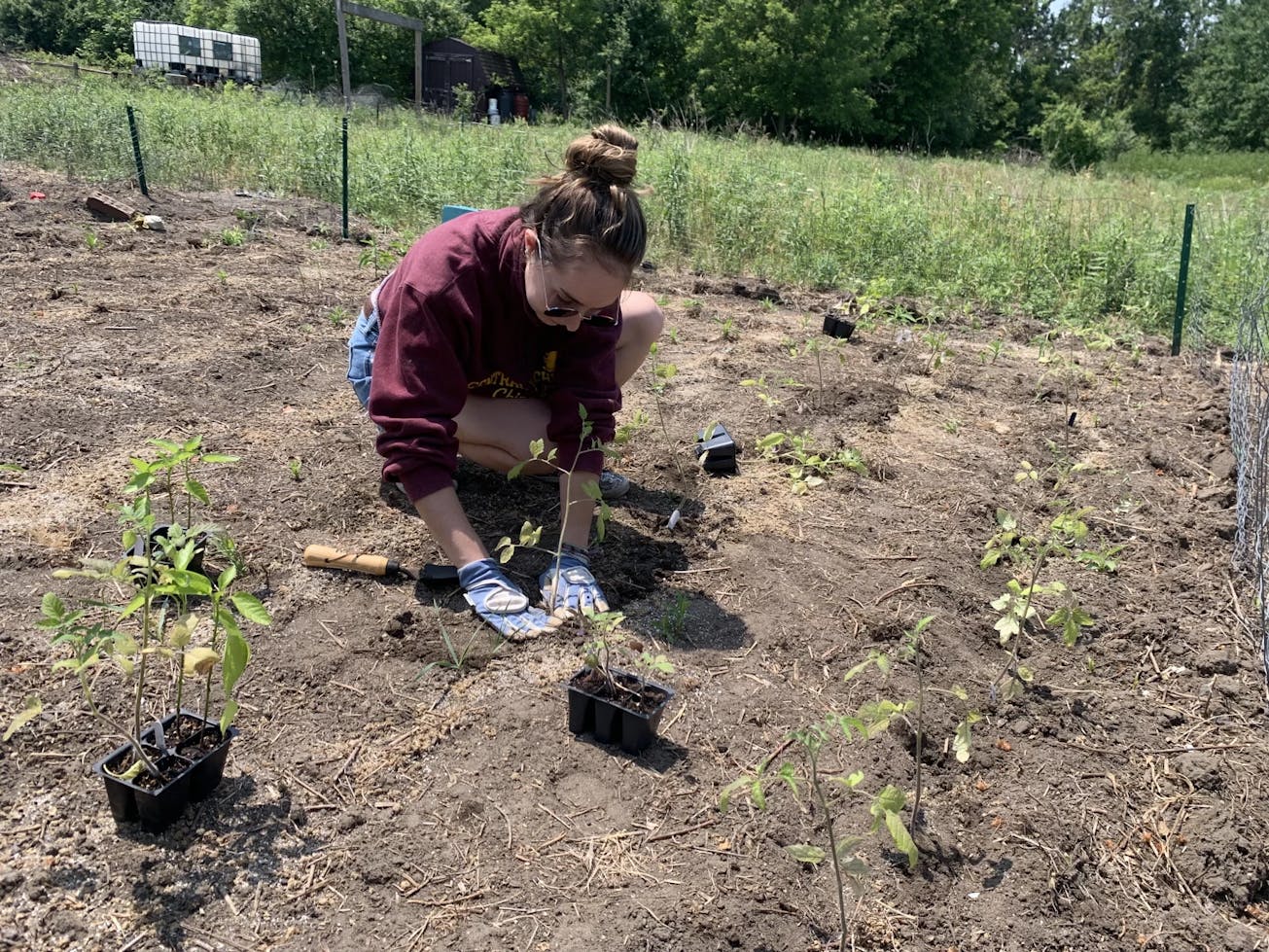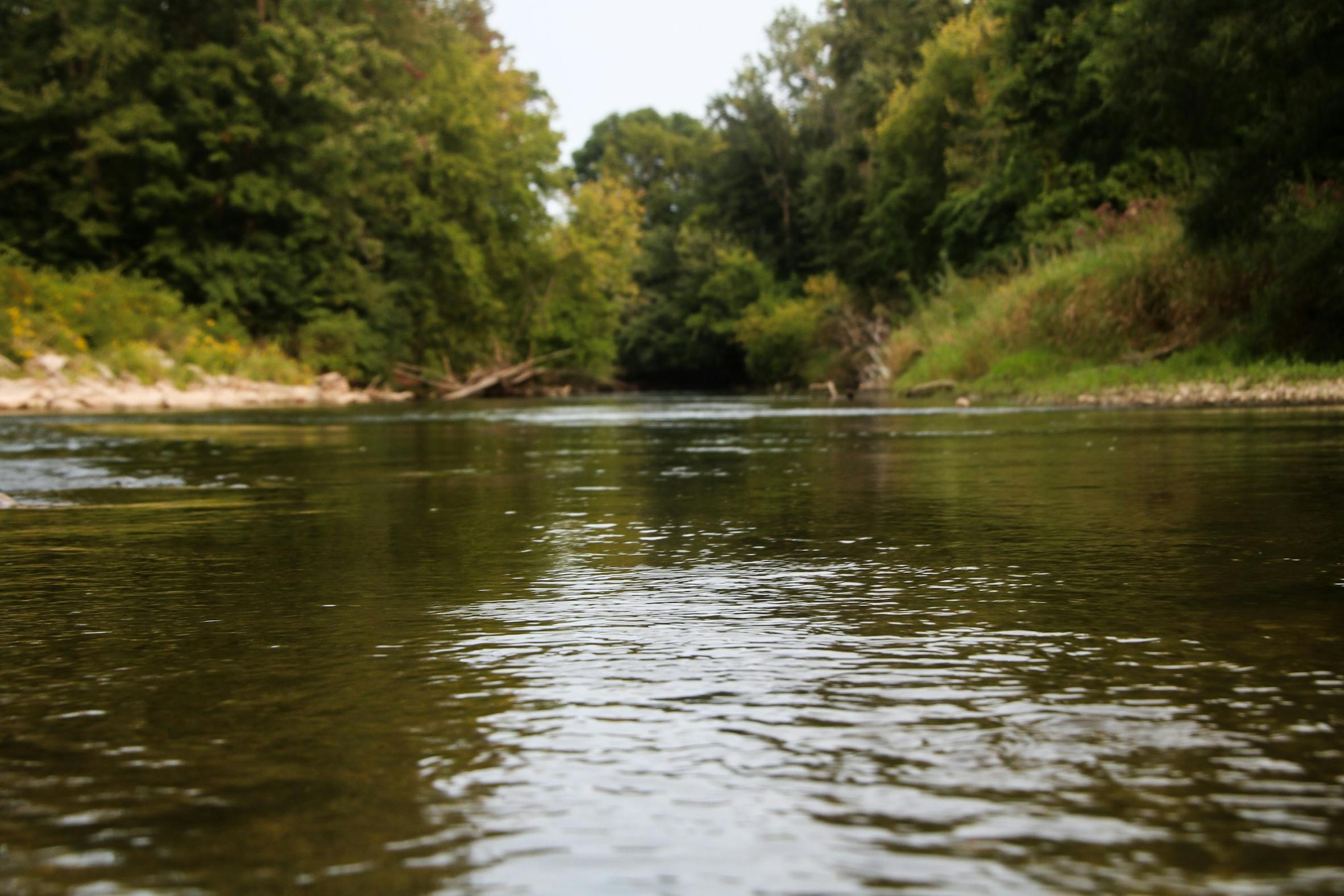'Sustainability isn't just environmental'
What is the carbon footprint of CMU, Michigan and the United States?


Just outside the city limits, wind turbines slowly turn and catch the eye of those traveling U.S. 127. Similarly does the gray and black smoke coming out of the exhaust pipes of cars traveling down that same highway.
Renewable and non-renewable energy are all around Central Michigan University, but how are they affecting the state -- and the world -- at large?
Most non-renewable energy sources release carbon emissions: particles of carbon dioxide that get released into the atmosphere when fossil fuels like and are burned according to International Energy Agency. When too much carbon dioxide is in the atmosphere, it acts as a blanket on the Earth that warms the planet and causes global temperatures to rise.
According to the IEA, in 2023 the United States ranked second in the world for carbon emissions at a whopping 4.5 gigatonnes (or 4.5 billion tons) released in one year’s time.
The country also had 13.3 tons per capita, or per person, through the year.
While the country has been reducing its coal usage, it also saw a decline in the use of renewable energy and two-thirds of the emissions came from electricity usage.
Michigan was one of 10 states that was a top contributor to this problem according to the U.S Energy Information Administration (EIA). The state was responsible for releasing 147.8 million metric tons of carbon dioxide in 2021. That is about half the weight of a blue whale.
Tracing the exact source of these emissions is no easy feat. Tao Zheng is a professor in the Geography and Environmental Studies Department at CMU, who has been working with other scientists both in and outside of the U.S., creating atmospheric greenhouse transport models.
These models work alongside towers and satellite observations to estimate carbon fluctuations from Earth’s surface. While the towers can observe and calculate carbon dioxide concentrations closer to the Earth’s surface, the satellite’s wider range comes with its own complications.
“The satellite observation is far from ideal,” Zheng said. “The ground track of NASA’s OCO (Orbital Carbon Observatory) satellite is only several kilometers wide, and it can take 16 days for these tracks to circle the Earth.”
Since 2014, Zheng has been researching and developing the models. He said the first step in development was a model that simulated how carbon flux from the Earth’s surface transported in the atmosphere across the globe.
It wouldn’t be until 2023 when he helped develop a new model that can trace backward in time to where the flux came from. He said this is one of the first steps toward his team’s larger goal for the project.
“Our work is tracing it back to the source,” Zheng said. “The ultimate goal is to figure out how much is emitted from each country, but we are far from that.”
The project has been funded by NASA’s Carbon Monitoring System Program. Zheng said a new funding from NASA’s OCO program will extend their work until 2027.
Central footprint
The university released 45,240 tons of carbon emissions in 2020 according to the Sustainability Tracking, Assessment and Rating System (STARS) report. This makes up roughly 0.03% of Michigan’s carbon output and 0.001% of the country’s that year.
Despite the numbers, Michigan has been taking steps to more sustainable living and in reducing its carbon footprint. In 2022, Gov Gretchen Whitmer launched the Michigan Healthy Climate Plan, with the goal of Michigan reaching carbon neutrality by 2050.
The initiative has been responsible for many accomplishments, such as 16% renewable energy across the state, various sustainability-focused bills being passed and plans to produce more electric vehicles.
The next Michigan Healthy Climate Plan Conference is scheduled for May 16 and 17 in Lansing. A full summary of the conference will be published on Michigan.gov following the event.

CMU student Grace Buchholz, one of the first new gardeners, tends to her plot in 2023. Courtesy photo from Central Sustainability.
Creating a sustainable campus
CMU has its own sustainability initiatives and practices, such as special recycling drives, establishing campus gardens and the creation of an on-campus farmer’s market. The university’s sustainability office, Central Sustainability, is responsible for these initiatives.
An award-winning office run by nine student employees, Central Sustainability has been working to make the CMU community more sustainable since 2020.
Ava Brewer, Lauren Dey, Claire Deblanc and Zoey Archbold are four of the nine staff members in the office. All of them said they had an interest in sustainability prior to being hired. Archbold specifically recalled when Central Sustainability made a visit to her high school for a presentation, and that it was one of the things that convinced her to attend CMU.
“That was the first time I was told sustainability isn’t just environmental,” she said. “For the first time in my life, I saw all of my values line up, and I knew what I wanted to do.”
Archbold’s sentiment was echoed by the other members. The group said they have a “holistic” approach to sustainability that goes beyond caring for the environment, but also caring for mental health and also having compassion for those around them.
“We know how important community is when incorporating sustainability at CMU,” Brewer said. “When you’re in a space you care about and feel like you belong in, you want to take care of it.”
Brewer said the office had experienced “huge growth” in its four years of existence, from building connections between the university and the city of Mount Pleasant through initiatives like the farmer’s market and waste reduction, to on-campus partnerships and volunteer trips through Alternative Breaks.
Central Sustainability has also seen a growth in student support, something that’s reflected in its four-year sustainability survey.
According to the survey report, there has been a 10% increase in students being familiar with the term sustainability, and increases in sustainability issues such as pollution, waste reduction and clean energy. In 2023, almost 90% of students who took the survey believe climate change is a human-created issue and needs to be addressed.
Deblanc said one contributor to this support is the way the office puts themselves out there, both physically and through social media.
“Having a physical office helps students see it (Central Sustainability) exists and that it matters,” Deblanc said. “We’ve seen students and faculty respond to it, because it’s one of these very visual things on campus.”
One of Central Sustainability’s biggest goals is longevity and continual growth.
“We always say sustainability is not a finish line,” Dey said. “It’s continuous. We can always continue achieving things and making them more accessible. …Everything we do is about increasing accessibility.”
Brewer said she wants Central Sustainability to last for years after the current members graduate. As a result, the office just hired four new students to help continue operations.
Throughout the month of April, the office is hosting a variety of Earth Month events, such as clean ups, walking tours, speaker events and workshops. Students can learn more about these upcoming events through its Instagram account and about what Central Sustainability does on its CMU webpage.

Water moves along the Chippewa River Sept. 14 Chipp-a-Waters Park.






